On March 28, 1979, the core of the Unit 2 reactor at the Three Mile Island Nuclear Power Plant in the United States partially melted and the TMI-2 reactor was destroyed. The cause of the accident was a minor malfunction in the secondary refrigeration circuit, which caused the primary refrigerant temperature to rise. This caused the reactor to automatically shut down. This happened because the level controller shut down the reactor coolant when it detected the presence of cooling water near the top of the tank. The water was at the top not because the tank was completely full, but because there was too little water in the tank, and the water boiled and expanded to the top of the tank.
The incident is an example that shows the importance of level sensors and their proper functioning. They are important not only in nuclear power plants but also in many applications. Every car, truck and motorcycle is equipped with a fuel level sensor that measures the amount of gasoline remaining in the tank. In addition, there are sensors for measuring the level of engine oil, brake/power steering fluid, cooling water, windshield washer fluid, etc. Industrial applications include level detection of liquids such as gasoline in water treatment tanks, transport tanks and storage tanks, petrochemical industry. Level measurement is very important in household appliances such as automatic coffee machines, water dispensers, juicers, water evaporators, steamers, refrigerators and freezers, boilers, heating systems, dishwashers, washing machines, steam irons, etc.
In short, liquid level sensor is one of the very important sensors and plays a very important role in various consumer/industrial applications. Like other types of sensors, liquid level sensors are available or can be designed using various sensing principles. It is very important to select the right type of sensor to meet the application requirements.
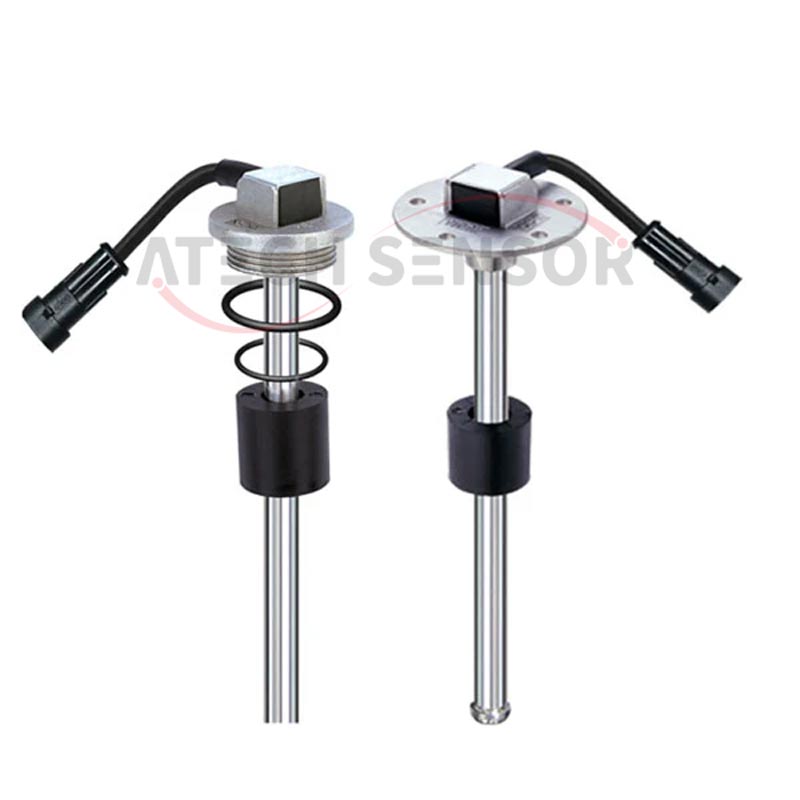
1.What is a liquid level sensor?
There are a variety of sensors on the market, which are usually categorized based on the specific application of the sensor. Sensors used to measure humidity are called humidity sensors, sensors used to measure pressure are called pressure sensors, sensors used to measure displacement are called position sensors, and so on, although they may all use similar detection principles. Similarly, sensors used to measure liquid level are called level sensors.
As is evident from the name, level sensors are used to measure the level of free-flowing materials. Such materials include liquids like water, oil, mud, and solids in granular/powdered form (solids that can flow). These materials tend to settle in a container tank due to gravity and maintain a level at rest. Level sensors measure the level relative to a predefined reference.
2.Classification
Classification according to detection points
Level sensors can be divided into three categories based on the number of locations where the presence of fluid (or fluid solids) is detected:
1. Single Point Level Sensors – These sensors are used when the level of liquid is detected at a single location only.
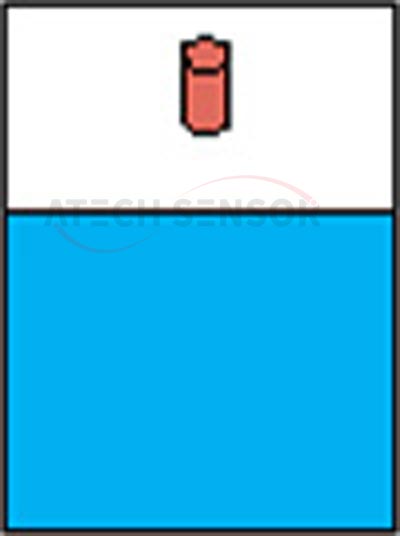
2. Multi-Point Level Sensors – These sensors are used when the level of liquid must be detected at multiple locations in a single location.
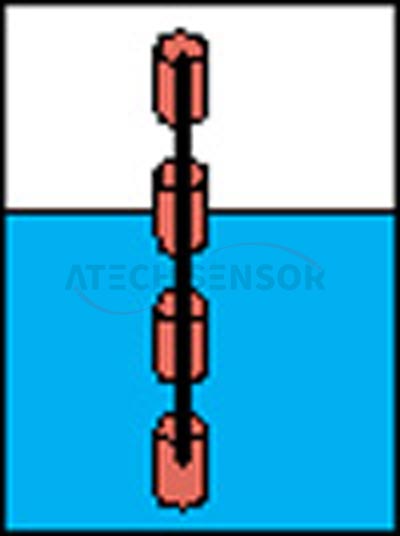
3. Continuous Level Sensors – These sensors are used to detect liquid levels at all locations

Classification by sensing principle
Various detection principles are used to measure liquids, fluid solids, sludge, etc.
Float level sensor
In these level sensors, a float moves with the surface of the liquid. The float is connected to the core by a spring. A reed switch is mounted on a sealed magnetic core that moves inside a rod as the float moves. This rod is surrounded by a powerful magnet. As the float rises or falls with the liquid level, the reed switch is activated due to the magnetic field created by the magnet.
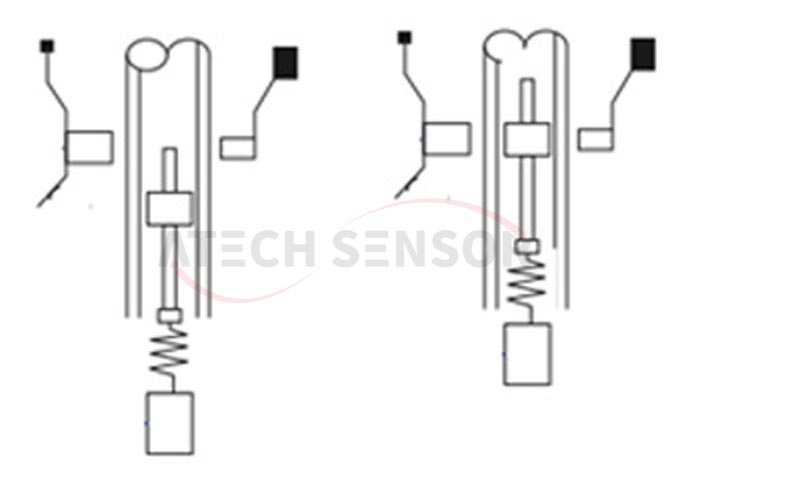

The design of these sensors also keeps the stem and core (with the reed switch) stationary and makes the magnet part of the movable float. For multi-point level sensors, multiple magnets/multiple reed switches are used (depending on the design).
The principle of the sensor (a float that moves with the liquid level) can be coupled with a dial indicator. Using the buoyancy, they can form a visual level indicator.
Resistive Liquid Level Sensor
Variable resistors are widely used in fuel level sensing. A wiper connected to a lever arm with a float moves on a continuous resistor track.
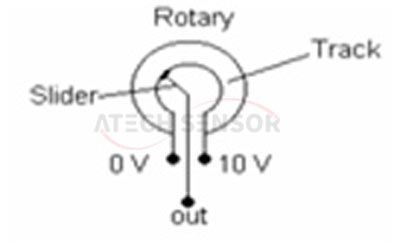
This sensor works on the principle of potentiometric measurement. A current is made to flow through a resistor. The voltage drops linearly across this resistor. The slider is connected to the float via this resistor. The voltage output is obtained between the slider and one end of the resistor. Therefore, when the liquid level changes, the slider moves and the output voltage changes.
A variation of this type uses the conductivity of the liquid being measured. Current pulses are sent through the sensing electrodes (electrically isolated from the tank or external pipe). When the sensor electrodes are immersed in the conductive liquid, an electrical connection is created. The electrical potential is proportional to the liquid level and is measured using a counter electrode or tank wall. It is used for continuous level measurement and is suitable for all conductive liquids.
Capacitive Level Sensor
Since capacitance depends on the overlap area between the plates, the distance between the plates, and the dielectric material between the plates, any one of the three can be varied to design a useful capacitive sensor.
The simplest type of capacitive level sensor is shown in the figure. It consists of two concentric tubes immersed in the fluid whose level is to be measured. Since the area of overlap between the plates and the distance between the plates are fixed, the capacitance becomes a function of the dielectric between the plates (i.e. the fluid between the two concentric tubes). When the level of the liquid changes, the capacitance also changes. This capacitance becomes a function of the level of the liquid.

Another variation of this sensor is to use parallel plates instead of concentric tubes. Also in this case, changes in the liquid level will change the effective dielectric constant and thus the capacitance between the plates.
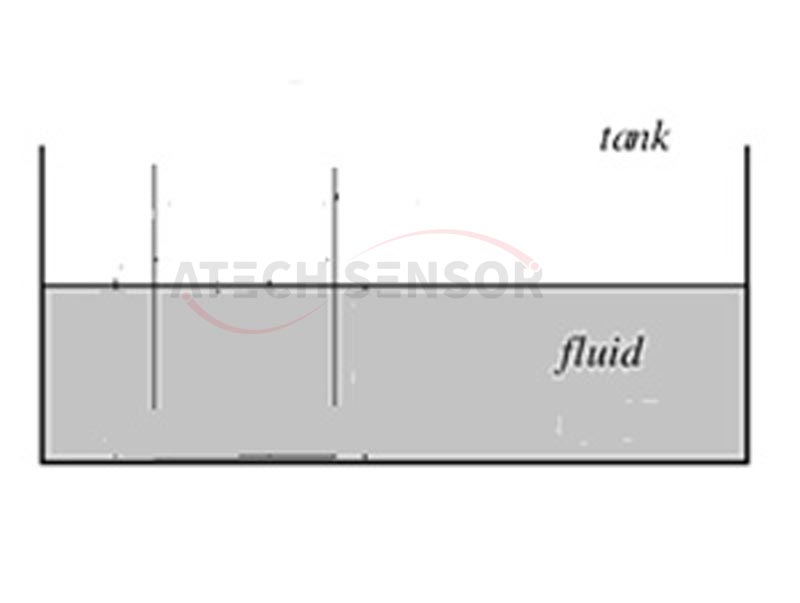
Pressure, Hall effect, ultrasonic
Pressure-Based Level Sensors
Pressure is defined as force per unit area. In a static fluid, the pressure at any depth is equal to the weight of the liquid acting on a unit area at that depth plus the pressure acting on the surface of the liquid. Level measurement based on pressure measurement is also called hydrostatic tank measurement.
It is based on the principle that the difference between the two pressures is equal to the height of the liquid multiplied by the specific gravity. Therefore, the force on the bottom of the fluid container depends only on the height of the liquid level, so, using the measured hydrostatic pressure and the knowledge of the specific gravity of the fluid, the level measurement is performed.

Since they are used for level measurement of corrosive liquids/water etc., the chemical compatibility of the sensing element must be checked. In addition, since the specific gravity of different liquids is different, the sensors must be calibrated individually.
Hall-based liquid level sensor
Hall based level sensors have been designed in a variety of configurations. The following figure shows a rotating rod sensor.
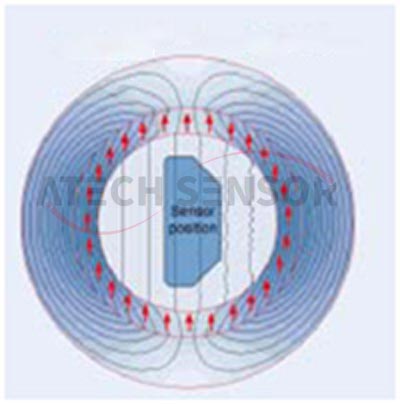
A linear Hall sensor is placed at the center of a diametrically magnetized magnetic ring surrounded by soft ferromagnets to direct the flow. The Hall sensor measures only the perpendicular component of the magnetic field. Therefore, as the ring moves with the lever, the magnetic field component measured by the Hall sensor changes. Therefore, the Hall sensor output becomes a function of the liquid level.
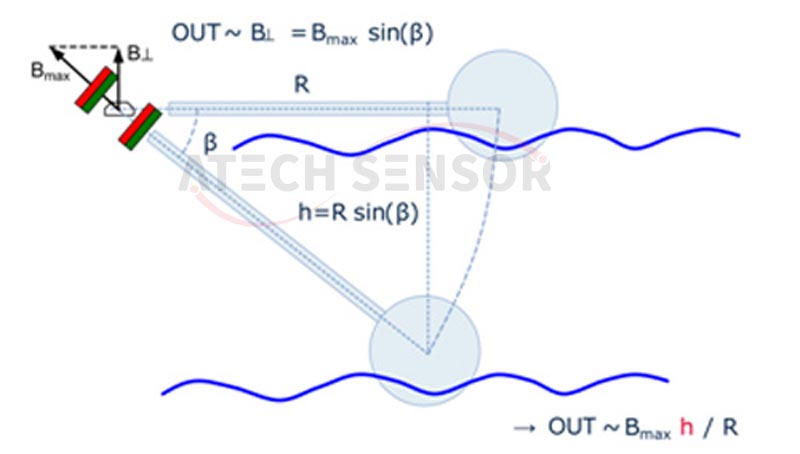
Hall sensors can be used in vertical float systems. Depending on the need for continuous or discrete level measurement, a series of Hall sensors can be placed at the required points. The magnet becomes part of the float. Therefore, as the float moves, the output of the Hall sensor will change.
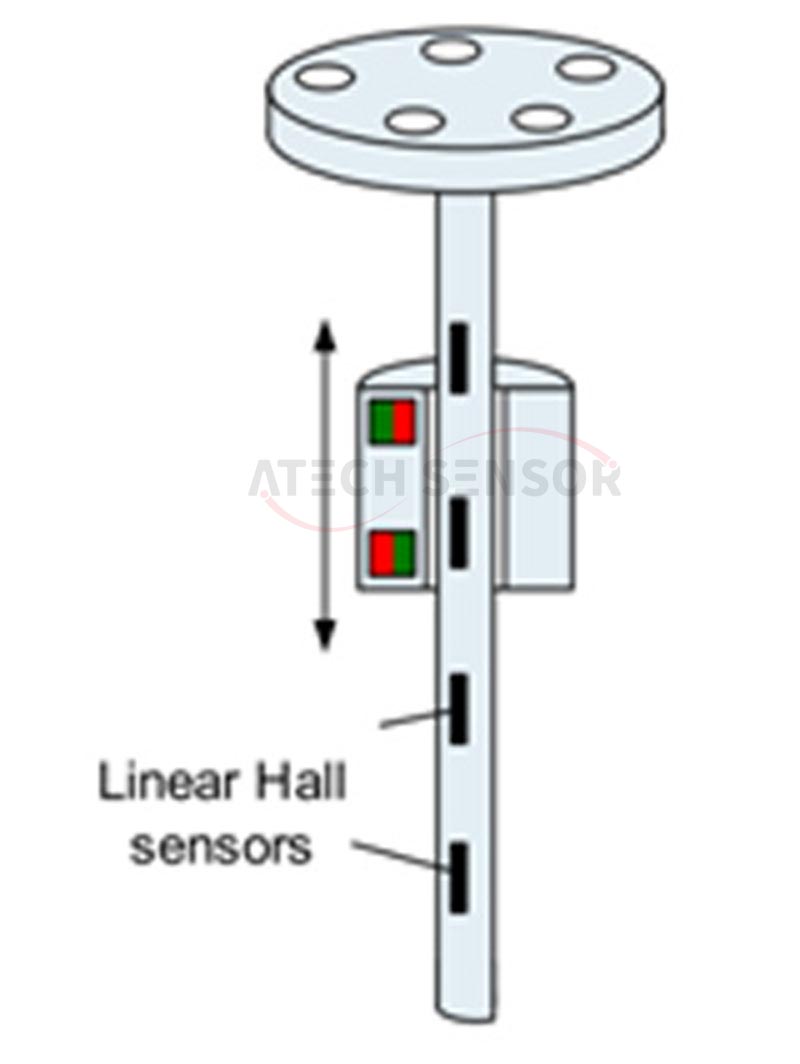
Hall sensors have good reliability, small size, wide operating voltage, and relatively low cost. All these features make them a very attractive choice among various other sensors.
Ultrasonic Level Sensor
Ultrasonic level meters work on the basic principle of time of flight, using sound waves to determine the liquid/solid/paste level.
Ultrasonic level sensors consist of two components; a highly efficient sensor and associated electronic transceiver. The complete return time between the transmitted ultrasonic pulse and the reflected echo is measured to determine the liquid level.
Ultrasonic methods are available in frequencies ranging from 15 to 200 kHz. Lower frequency instruments are used for more difficult applications; such as longer distances and solids level measurement, while higher frequencies are used for shorter liquid level measurements.

Optical radar level meter
Radar level sensor
Radar level sensors are essentially very similar to ultrasonic level sensors. The only difference between the two is the use of frequency. Radar level measurement is also based on the principle of measuring the time elapsed between the emission of a microwave pulse and the reception of the reflected echo.

Range resolution and frequency are two key parameters that must be considered when selecting these sensors. The accuracy of such sensors depends on the application, the antenna and its mounting, and the quality of the signal processing software.
Optical Sensors
It is a contact sensor that utilizes the principle of optical reflection. The sensor contains an infrared LED and an infrared photodetector. The light emitted by the LED is directed towards a prism; the prism forms the tip of the sensor. As long as the prism is not in contact with the liquid, the emitted light is reflected back to the receiver. However, when the prism is immersed in the liquid, the light is refracted into the liquid, so little or no light reaches the receiver. Therefore, based on the amount of reflected light, the presence or absence of liquid is detected.
External Sensors
The external sensor uses a proprietary sensor technology that uses piezoelectric material. When the piezoelectric material is excited, it generates an acoustic signal due to the natural resonance of the material. The sensor generates this acoustic signal, guides it through the bottle wall and detects the reflected pulse.
The amount of energy reflected is determined by the "acoustic impedance mismatch" of the materials used. For example, if sound travels through two materials with similar acoustic impedances, very little energy will be reflected. If sound travels through two materials with different impedance values, most of the sound energy will be reflected. Acoustic impedance mismatch provides the basis for level detection.

Sensor Selection
Sensor Level Selection
There are a variety of commercial solutions available for position sensing and level detection. Designers can choose the best technology from the available options to meet their business and engineering goals. But this also creates a wealth of problems.
The problem of abundance, the availability of many options, often confuses designers rather than facilitates them. Level sensing is a form of position sensing that can be accomplished using many different technologies – inductive, capacitive, mechanical, magnetoresistive, Hall effect, optical, etc. There may be more than one solution that works for a particular application, and this is where the confusion arises.
● Number of questions to ask when selecting a sensor
● Required level detection points
● Measurement range
● Is the material being measured conductive?
● Should the sensor be placed inside or outside the material?
● Is the material solid or liquid?
● Type of measurement required – contact or non-contact?
● Acceptable accuracy, precision and resolution
● Operating temperature range
● Output type – analog, digital, etc.

